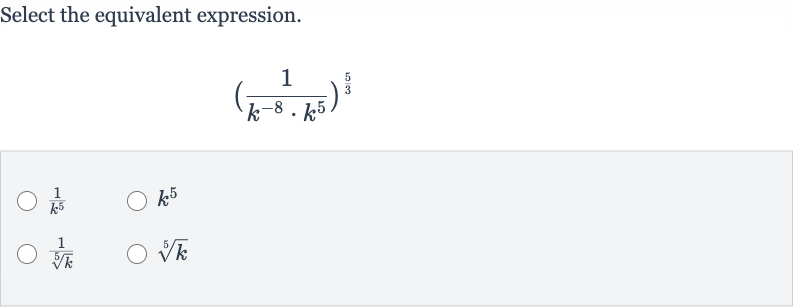AI tutor
Full solution
Q. Select the equivalent expression.
- Simplify Exponents: Simplify the expression inside the parentheses by adding the exponents of . When multiplying powers with the same base, we add the exponents. So, . The expression becomes .
- Apply Quotient Rule: Apply the power of a quotient rule.The power of a quotient rule states that .So, .
- Simplify Numerator: Simplify the numerator.Any number raised to any power is itself if the number is .So, .The expression now is .
- Apply Power Rule: Apply the power to a power rule.The power to a power rule states that .So, .The expression now is .
- Move Base to Numerator: Simplify the expression by moving the term to the numerator.When we have a negative exponent, we can move the base to the opposite side of the fraction to make the exponent positive.So, .
More problems from Multiplication with rational exponents
QuestionGet tutor help
QuestionGet tutor help
QuestionGet tutor help
QuestionGet tutor help
QuestionGet tutor help

